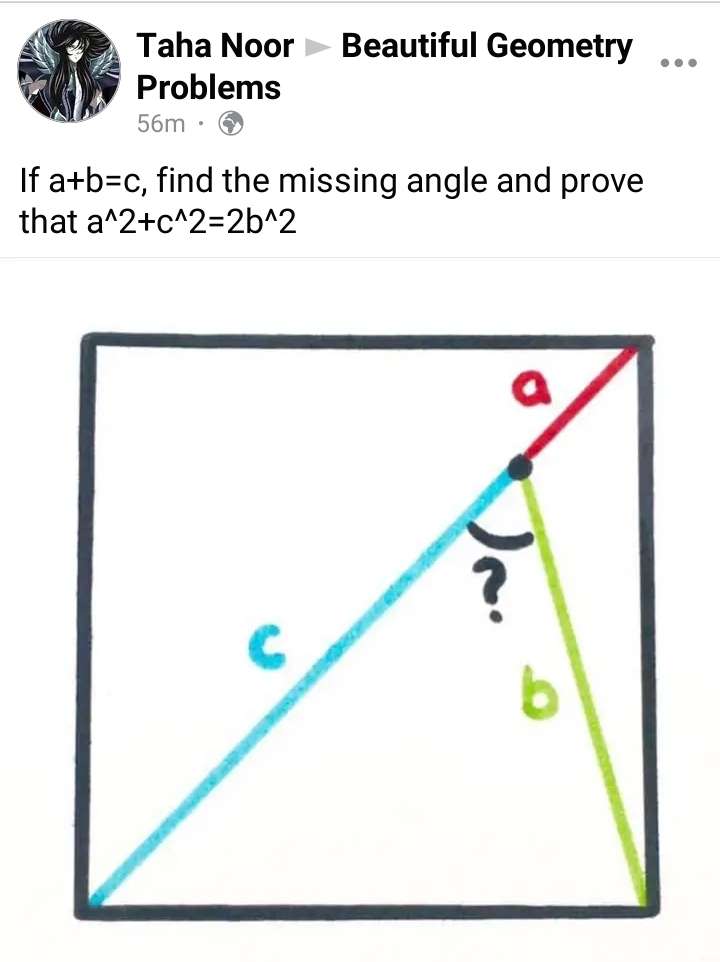Mathematics Question and Solution
Let the square side be 2 units.
Notice;
a+b = c --- (1).
2√(2) = c+a
2√(2)-a = c --- (2).
a² = 2d²
d = (a/√(2)) units.
e = 2-d
e = (2-(a/√(2))) units.
b² = (2-(a/√(2)))²+(a/√(2))²
b² = 4-(4a/√(2))+½(a²)+½(a²)
b = √(4-(4a/√(2))+a²) --- (3).
At (1).
a+b = c
Substituting (3) in (1).
a+√(4-(4a/√(2))+a²) = c --- (4).
Substituting (2) in (4).
a+√(4-(4a/√(2))+a²) = 2√(2)-a
√(4-(4a/√(2))+a²) = 2√(2)-2a
4-(4a/√(2))+a² = 8-8√(2)a+4a²
3a²-8√(2)a+2√(2)a+4 = 0
3a²-6√(2)a+4 = 0
3a²-8.48528137424a+4 = 0
Solving the quadratic equation.
a ≠ 2.23071 units.
a = 0.597717 units.
c = 2√(2)-a
c = 2.23071012475 units.
a+b = c
b = c-a
b = 2.23071012475-0.597717
b = 1.63299312475 units.
Calculating the required angle, let it be f.
(2/sinf) = (1.63299312475/sin45)
f = 60°
Proving that;
a²+c² = 2b²
Notice;
2b² = 2*1.63299312475*1.63299312475
= 5.33333309096 square units.
= 5.33 square units to 2 decimal places.
Therefore;
a²+c² is;
0.597717²+2.23071012475²
= 5.33333327275 square units.
= 5.33 square units to 2 decimal places.
Proved!
